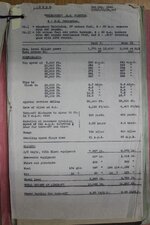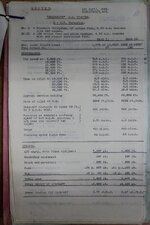The biggest problem with the Westland Whirlwind was its R-R Peregrine engines--lack of high altitude performance, unreliable (though not as bad as early Napier Sabre), limited displacement. These engines were already considered problematic even as the Whirlwind was entering service in 1940, an otherwise stellar short range fighter-bomber by all accounts with unmatched firepower by 1940 standards, excellent overall performance and good survivability.
The Welkin was a pressurized development of the Whirlwind design that used high-altitude spec Merlin 76/77 engines. Obviously the pressurized cockpit and very long (70 feet!) high aspect ratio wing which was very prone to high incidence/shock stall like the later U-2 effectively made this a completely new aircraft. But as the high altitude German bomber threat never really materialized over Britain, only 77 Welkins were built from '42 to '43.
So here's an idea--why not remove the pressurization requirement to greatly simplify the manufacturing process, design a shorter 45-50' wing based on the already successful Whirlwind, and use the Merlin 61? The Welkin had enough fuel for 1,480 mile range which would make the resulting Whirlwind II a better escort fighter (one of the original Whirlwind's design failings) and the 4 x 20mm Hispano armament in the fuselage tray was already perfect. Add some bomb/rocket racks and you have a twin engine alternative to the Typhoon and its troubled Sabre engine, an arguably better alternative to the Mosquito as a day fighter, and possibly even a V-1 interceptor.
Thoughts?

The Welkin was a pressurized development of the Whirlwind design that used high-altitude spec Merlin 76/77 engines. Obviously the pressurized cockpit and very long (70 feet!) high aspect ratio wing which was very prone to high incidence/shock stall like the later U-2 effectively made this a completely new aircraft. But as the high altitude German bomber threat never really materialized over Britain, only 77 Welkins were built from '42 to '43.
So here's an idea--why not remove the pressurization requirement to greatly simplify the manufacturing process, design a shorter 45-50' wing based on the already successful Whirlwind, and use the Merlin 61? The Welkin had enough fuel for 1,480 mile range which would make the resulting Whirlwind II a better escort fighter (one of the original Whirlwind's design failings) and the 4 x 20mm Hispano armament in the fuselage tray was already perfect. Add some bomb/rocket racks and you have a twin engine alternative to the Typhoon and its troubled Sabre engine, an arguably better alternative to the Mosquito as a day fighter, and possibly even a V-1 interceptor.
Thoughts?
Last edited:



